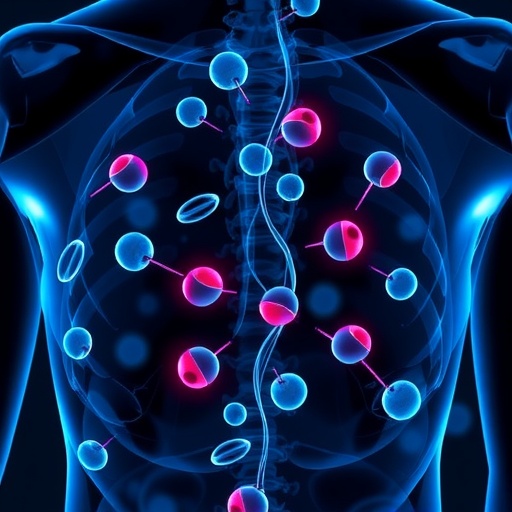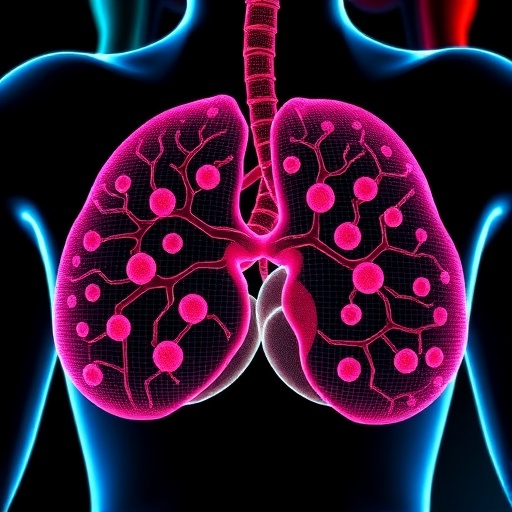Takotsubo cardiomyopathy, commonly known as Broken Heart Syndrome, presents a perplexing challenge in intensive care units (ICUs) worldwide. Often mistaken for a conventional heart attack due to its similar clinical presentation, this cardiac condition remains elusive without clearly defined detection protocols. Emerging evidence suggests that Takotsubo syndrome (TTS) may be more prevalent in critically ill patients than previously recognized, underscoring the urgent need for refined diagnostic pathways in ICU settings to safeguard patient outcomes.
This syndrome is characterized primarily by transient dysfunction of the left ventricle, the heart’s main pumping chamber, leading to a distinctive ballooning effect observable during cardiac imaging. Unlike classical myocardial infarctions caused by coronary artery blockages, Takotsubo syndrome stems from acute and severe emotional or physical stress, triggering a surge of catecholamines and subsequent myocardial stunning. This stress-induced cardiomyopathy disrupts normal cardiac contractility, mimicking acute coronary syndrome with symptoms such as chest pain, shortness of breath, and electrocardiographic abnormalities, thereby complicating immediate diagnosis.
Recent systematic research from the University of South Australia has shed new light on the diagnostic challenge posed by Takotsubo syndrome in critical care environments. The study meticulously reviewed existing diagnostic tools and proposed a novel clinical pathway tailored for ICU patients. Key to this approach is the integration of electrocardiogram (ECG) pattern analysis and blood biomarkers, which together offer a promising avenue for early detection. ECG changes in Takotsubo patients, while often subtle and non-specific, can be identified by clinicians skilled in advanced cardiac monitoring techniques.
.adsslot_riPRVLeAKw{ width:728px !important; height:90px !important; }
@media (max-width:1199px) { .adsslot_riPRVLeAKw{ width:468px !important; height:60px !important; } }
@media (max-width:767px) { .adsslot_riPRVLeAKw{ width:320px !important; height:50px !important; } }
ADVERTISEMENT
Blood biomarkers play an equally vital role in differentiating Takotsubo syndrome from other cardiac pathologies. Elevations in cardiac troponins, brain natriuretic peptide (BNP), and catecholamine metabolites provide biochemical signatures indicative of myocardial stress rather than ischemic necrosis typical of infarctions. Incorporating routine biochemical screening into ICU protocols may unveil hidden cases of TTS that clinical observation alone might miss, especially given the complexity of patients’ primary illnesses in critical care.
The pathophysiology of Takotsubo syndrome remains an active area of investigation. Current understanding points to a catecholamine-mediated myocardial stunning mechanism induced by sympathetic nervous system hyperactivation. This excess adrenaline release, often in response to severe stressors such as surgery, sepsis, or trauma, precipitates myocardial contractile abnormalities and microvascular dysfunction. The resultant heterogeneous contraction patterns in the myocardium produce the hallmark apical ballooning shape visible on echocardiography or ventriculography.
Compounding the diagnostic challenge, Takotsubo syndrome frequently coexists with or is overshadowed by the patient’s primary critical illness. Symptoms like hypotension, arrhythmias, pulmonary congestion, and chest discomfort may be attributed solely to the underlying condition, leading to underreporting of TTS incidence in intensive care databases. This stealthy clinical presentation necessitates heightened awareness and a standardized approach to screening for cardiac involvement in vulnerable patients.
To address these complexities, the researchers developed a comprehensive clinical pathway for ICU admission and ongoing care of suspected Takotsubo syndrome cases. This protocol emphasizes sequential steps: early identification through symptom monitoring, strategic use of ECG and biomarker evaluation, prompt cardiac imaging to assess ventricular function, and multidisciplinary clinical decision-making to initiate supportive or interventional therapy. The pathway is designed to integrate seamlessly within existing ICU workflows, enhancing feasibility without imposing burdensome demands.
The potential complications of untreated Takotsubo syndrome underscore the critical need for such a protocol. Complications include life-threatening arrhythmias, acute heart failure, pulmonary edema, thromboembolism due to ventricular akinesis, and, in severe cases, cardiogenic shock or cardiac arrest. Early recognition and management not only improve survival chances but also reduce ICU length of stay and long-term cardiac morbidity, signifying a substantial impact on both patient outcomes and healthcare resource utilization.
This innovative research led by Vicky Visvanathan, a seasoned critical care nurse and investigator, bridges the gap between clinical observation and evidence-based management. Visvanathan underscores that although Takotsubo syndrome’s reported occurrence varies from 1.5% to 28% in ICUs internationally, this variability is likely reflective of inconsistent recognition practices rather than actual incidence. Standardizing diagnostic criteria and pathways could harmonize detection rates and improve comparative data research.
The study’s findings carry profound implications not only for medical practitioners but also for health systems aiming to optimize critical care delivery. By empowering nurses and intensivists with focused diagnostic tools and clear pathways, ICUs can transition from reactive to proactive cardiac care models. This paradigm shift holds promise for reducing the hidden burden of stress-induced cardiomyopathy and elevating standards of patient monitoring and intervention during critical illness.
Looking ahead, the research team’s proposed clinical pathway is undergoing rigorous review by clinical stakeholders and is anticipated to be implemented broadly in Australian ICUs. Its success could inspire international adoption, advancing global understanding and management of Takotsubo syndrome in complex critical care environments. Through such innovation, the once-misunderstood Broken Heart syndrome may soon become a diagnosable and treatable entity, saving lives where it previously went undetected.
Subject of Research: Not applicable
Article Title: Identification of Takotsubo syndrome in intensive care units: A scoping review
News Publication Date: 1-Sep-2025
Web References:
– Takotsubo cardiomyopathy symptoms and causes – Mayo Clinic: https://www.mayoclinic.org/diseases-conditions/broken-heart-syndrome/symptoms-causes/syc-20354617
– Electrocardiogram information – HealthDirect: https://www.healthdirect.gov.au/electrocardiogram-ecg
– Research article – Australian Critical Care: http://dx.doi.org/10.1016/j.aucc.2025.101269
References: University of South Australia systematic review published in Australian Critical Care.
Keywords: Cardiovascular disorders, Acute myocardial infarction, Cardiac arrest, Cardiac arrhythmias, Heart disease, Health care, Caregivers, Emergency medicine, Patient monitoring, Nursing
Tags: acute coronary syndrome mimicBroken Heart Syndromecardiac threats in ICUscatecholamine surge effectsdiagnostic challenges in critical careemotional stress cardiomyopathymyocardial stunning mechanismspatient outcomes in intensive carerefined diagnostic pathwayssystematic research on Takotsubo syndromeTakotsubo syndrometransient left ventricular dysfunction





